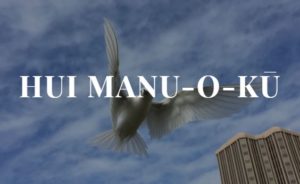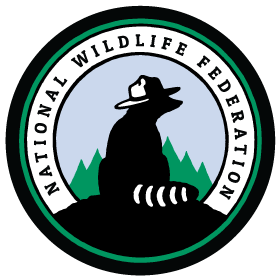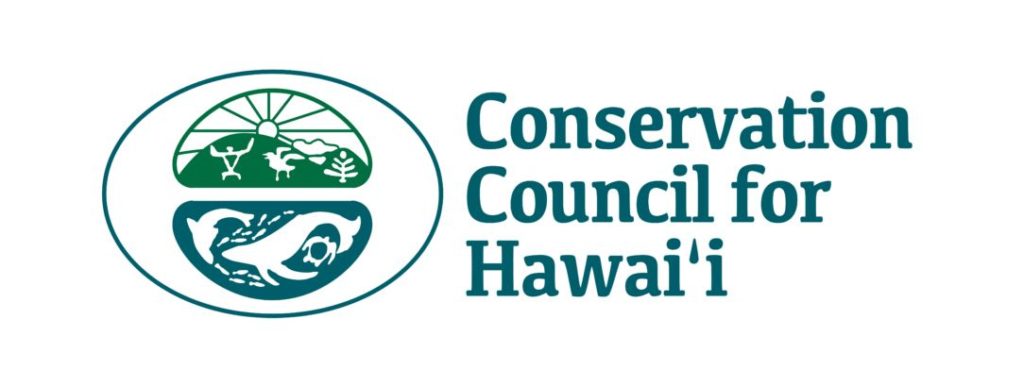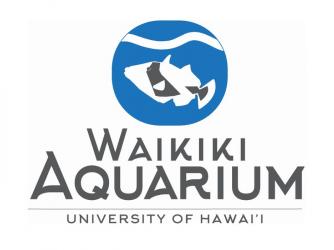Mahalo to our Partners and Contributors
n our 6th year of honoring the Manu O Kū (white fairy tern) here in Honolulu, we would like to thank our partners, supporters, and all of you for participating over the years. The Manu O Kū serves as an ambassador for the wildlife, plants and ecosystems of Hawaii!
With partnership and support from Festival Co-Founders



 The Honolulu Zoo is the only zoo within a radius of 2,392 miles. It is also the only zoo in the United States that originated in a King’s grant of royal lands to the people. In 1876, King David Kalakaua, Monarch of Hawai‘i, made lands of the Leahi Crown Holdings available, “to the people of Hawai‘i.”
The Honolulu Zoo is the only zoo within a radius of 2,392 miles. It is also the only zoo in the United States that originated in a King’s grant of royal lands to the people. In 1876, King David Kalakaua, Monarch of Hawai‘i, made lands of the Leahi Crown Holdings available, “to the people of Hawai‘i.”
 Promote and improve the practice of arboriculture. Stimulate greater public interest in the planting and preservation of trees and palms for shade and ornamental value. Promote public education to develop a greater appreciation for trees and palms. Recommend and uphold the ISA’s “Code of Ethics” established to maintain a high level of practice of those engaged in the profession. Provide Continuing Education Units for Certified Arborists, Tree Workers and Utility specialists, and network with arborists in Hawaii and elsewhere.
Promote and improve the practice of arboriculture. Stimulate greater public interest in the planting and preservation of trees and palms for shade and ornamental value. Promote public education to develop a greater appreciation for trees and palms. Recommend and uphold the ISA’s “Code of Ethics” established to maintain a high level of practice of those engaged in the profession. Provide Continuing Education Units for Certified Arborists, Tree Workers and Utility specialists, and network with arborists in Hawaii and elsewhere.
 ABC is the Western Hemisphere’s bird conservation specialist — the only organization with a single and steadfast commitment to achieving conservation results for birds and their habitats throughout the Americas
ABC is the Western Hemisphere’s bird conservation specialist — the only organization with a single and steadfast commitment to achieving conservation results for birds and their habitats throughout the Americas We believe that the welfare of human beings is deeply linked to nature — to the existence in our world of a vast diversity of wild animals and plants. Because diversity has intrinsic value, and because its loss impoverishes society, we work to secure a future for all species, great and small, hovering on the brink of extinction.
We believe that the welfare of human beings is deeply linked to nature — to the existence in our world of a vast diversity of wild animals and plants. Because diversity has intrinsic value, and because its loss impoverishes society, we work to secure a future for all species, great and small, hovering on the brink of extinction.
 Enhance, protect, conserve and manage Hawaii’s unique and limited natural, cultural and historic resources held in public trust for current and future generations of the people of Hawaii nei, and its visitors, in partnership with others from the public and private sectors.
Enhance, protect, conserve and manage Hawaii’s unique and limited natural, cultural and historic resources held in public trust for current and future generations of the people of Hawaii nei, and its visitors, in partnership with others from the public and private sectors.
 E malama, hoihoi hou, wehewehe, kaana a hoohiwahiwa i ke ano laha ole o ka moomeheu, ka moaukala a me ka mana o ka Hale Alii o Iolani a me kona pa no ka pono o ke kanaka oiwi a me ka poe o Hawaii nei a me ko ke ao nei. To preserve, restore, interpret, share, and celebrate the unique cultural, historical, and spiritual qualities of Iolani Palace and its grounds for the benefit of native Hawaiians, the people of Hawaii, and the world.
E malama, hoihoi hou, wehewehe, kaana a hoohiwahiwa i ke ano laha ole o ka moomeheu, ka moaukala a me ka mana o ka Hale Alii o Iolani a me kona pa no ka pono o ke kanaka oiwi a me ka poe o Hawaii nei a me ko ke ao nei. To preserve, restore, interpret, share, and celebrate the unique cultural, historical, and spiritual qualities of Iolani Palace and its grounds for the benefit of native Hawaiians, the people of Hawaii, and the world. To support the Midway Atoll National Wildlife Refuge / Battle of Midway National Memorial and its efforts to preserve, protect, and restore the biological diversity and historic resources of Midway Atoll, while providing opportunity for wildlife-dependent recreation, education, cultural experiences, and scientific research.
To support the Midway Atoll National Wildlife Refuge / Battle of Midway National Memorial and its efforts to preserve, protect, and restore the biological diversity and historic resources of Midway Atoll, while providing opportunity for wildlife-dependent recreation, education, cultural experiences, and scientific research.

Hawaii Audubon Society is a nonprofit membership organization that fosters community values to protect and restore native wildlife and ecosystems and conserve natural resources through education, science and advocacy in Hawai‘i and the Pacific.
 Hawai‘i Nature Center seeks to foster awareness, appreciation, understanding, and stewardship of Hawai‘i’s environment by educating children with an interactive and immersive approach.
Hawai‘i Nature Center seeks to foster awareness, appreciation, understanding, and stewardship of Hawai‘i’s environment by educating children with an interactive and immersive approach.
 The Hawai‘i Wildlife Center is a state- and region-wide wildlife response and conservation organization. Our programs include disaster response and responder training, contingency planning, research and hands-on wildlife rehabilitation at our wildlife hospital in Kapa‘au, on Hawai‘i Island. The vision of the Hawai‘i Wildlife Center is a world where native species recover and thrive through comprehensive conservation strategies and partnerships.
The Hawai‘i Wildlife Center is a state- and region-wide wildlife response and conservation organization. Our programs include disaster response and responder training, contingency planning, research and hands-on wildlife rehabilitation at our wildlife hospital in Kapa‘au, on Hawai‘i Island. The vision of the Hawai‘i Wildlife Center is a world where native species recover and thrive through comprehensive conservation strategies and partnerships.
 Created by Congress in 1992 to protect humpback whales and their habitat in Hawai`i, our sanctuary, which lies within the shallow (less than 600 feet) and warm waters surrounding the main Hawaiian Islands, constitutes one of the world’s most important humpback whale habitats. Through education, outreach, research and resource protection activities, the sanctuary strives to protect humpback whales and their habitat in Hawai`i.
Created by Congress in 1992 to protect humpback whales and their habitat in Hawai`i, our sanctuary, which lies within the shallow (less than 600 feet) and warm waters surrounding the main Hawaiian Islands, constitutes one of the world’s most important humpback whale habitats. Through education, outreach, research and resource protection activities, the sanctuary strives to protect humpback whales and their habitat in Hawai`i.
 Though we share similar goals and work with other conservation groups, we are the only organization on Oahu whose sole mission it is to protect and preserve the critically endangered Hawaiian Monk Seal species. Our founders, staff and ambassadors are dedicated to preserving one of Hawaii’s most valued and beloved marine natural treasures, and helping the species repopulate by helping protect their declining younger generations, who are the foundation of the species’ future to avoid extinction.
Though we share similar goals and work with other conservation groups, we are the only organization on Oahu whose sole mission it is to protect and preserve the critically endangered Hawaiian Monk Seal species. Our founders, staff and ambassadors are dedicated to preserving one of Hawaii’s most valued and beloved marine natural treasures, and helping the species repopulate by helping protect their declining younger generations, who are the foundation of the species’ future to avoid extinction.
 This group of conservationists and citizens all have one thing in common: interest and admiration for White Terns, or manu-o-Kū. We ensure that the official bird of Honolulu is taken care of and watched after. Manu-o-Kū is a very unique bird, especially for an urban center like Honolulu. Our citizen science initiative to helps track the growing population to ensure that the population is protected and cared for, so that they continue to thrive in Honolulu.
This group of conservationists and citizens all have one thing in common: interest and admiration for White Terns, or manu-o-Kū. We ensure that the official bird of Honolulu is taken care of and watched after. Manu-o-Kū is a very unique bird, especially for an urban center like Honolulu. Our citizen science initiative to helps track the growing population to ensure that the population is protected and cared for, so that they continue to thrive in Honolulu.
 We are the Kapi’olani Community College Ecology Club, Nā Kia’i Honua or Earth Guardians! Our mission is to inspire and educate students in the sciences of the environment and ecology by actively engaging in community-based projects.
We are the Kapi’olani Community College Ecology Club, Nā Kia’i Honua or Earth Guardians! Our mission is to inspire and educate students in the sciences of the environment and ecology by actively engaging in community-based projects.
 We sustain a thriving taro patch that shares its resources with the community. There are a variety of native and indigenous trees and shrubs growing along the stream and low-lying slopes. Families, students, and community organizations are welcome to engage and immerse themselves in hana Hawaiʻi and ʻōlelo Hawaiʻi. Kūpuna and keiki feel welcome and comfortable sharing their knowledge about kalo and nā mea Hawaiʻi. Our staff is skilled in the identification, cultivation, and propogation of a variety of native plants.
We sustain a thriving taro patch that shares its resources with the community. There are a variety of native and indigenous trees and shrubs growing along the stream and low-lying slopes. Families, students, and community organizations are welcome to engage and immerse themselves in hana Hawaiʻi and ʻōlelo Hawaiʻi. Kūpuna and keiki feel welcome and comfortable sharing their knowledge about kalo and nā mea Hawaiʻi. Our staff is skilled in the identification, cultivation, and propogation of a variety of native plants. A self-taught photographer who finds passion photographing Hawaii’s wildlife, mainly, the Hawaiian Monk Seal and the White Tern (Manu O Ku). As a volunteer for groups that protect these endangered and threatened species, my photographs are not only a means to document, research and study their behaviors so we can better understand them and educate the public; but they are also a way for those with a like passion to enjoy and share their beauty in their own homes.
A self-taught photographer who finds passion photographing Hawaii’s wildlife, mainly, the Hawaiian Monk Seal and the White Tern (Manu O Ku). As a volunteer for groups that protect these endangered and threatened species, my photographs are not only a means to document, research and study their behaviors so we can better understand them and educate the public; but they are also a way for those with a like passion to enjoy and share their beauty in their own homes.
 We believe America’s experience with cherished landscapes and wildlife has helped define and shape our national character and identity for generations. Protecting these natural resources is a cause that has long united Americans from all walks of life and political stripes. For us all, it is our sacred duty and obligation to protect and build upon our conservation heritage for the sake of wildlife, ourselves, our neighbors, and—most of all—for future generations.
We believe America’s experience with cherished landscapes and wildlife has helped define and shape our national character and identity for generations. Protecting these natural resources is a cause that has long united Americans from all walks of life and political stripes. For us all, it is our sacred duty and obligation to protect and build upon our conservation heritage for the sake of wildlife, ourselves, our neighbors, and—most of all—for future generations.
 The Outdoor Circle is a statewide environmental non-profit that works with branches throughout the Hawaiian Islands to protect Hawai‘i’s unique natural beauty for future generations through community improvement projects, public education, and advocacy.
The Outdoor Circle is a statewide environmental non-profit that works with branches throughout the Hawaiian Islands to protect Hawai‘i’s unique natural beauty for future generations through community improvement projects, public education, and advocacy.
 Pacific Rim Conservation’s mission is to maintain and restore native bird diversity, populations, and habitats in Hawaii and across the Pacific region. Founded in 2006, we work together with local communities, government agencies, and other conservation organizations to achieve these goals. Throughout all of our work, we strive to use a science-based approach to management, using research to improve our methods and inform future conservation actions.
Pacific Rim Conservation’s mission is to maintain and restore native bird diversity, populations, and habitats in Hawaii and across the Pacific region. Founded in 2006, we work together with local communities, government agencies, and other conservation organizations to achieve these goals. Throughout all of our work, we strive to use a science-based approach to management, using research to improve our methods and inform future conservation actions.
 As the largest contiguous fully protected conservation area under the U.S. flag, and one of the largest marine conservation areas in the world, our mission is to carry out seamless integrated management to ensure ecological integrity and achieve strong, long-term protection and perpetuation of NWHI ecosystems, Native Hawaiian culture, and heritage resources for current and future generations.
As the largest contiguous fully protected conservation area under the U.S. flag, and one of the largest marine conservation areas in the world, our mission is to carry out seamless integrated management to ensure ecological integrity and achieve strong, long-term protection and perpetuation of NWHI ecosystems, Native Hawaiian culture, and heritage resources for current and future generations.
 Founded on a legacy of Pacific Ocean exploration, the Polynesian Voyaging Society seeks to perpetuate the art and science of traditional Polynesian voyaging and the spirit of exploration through experiential educational programs that inspire students and their communities to respect and care for themselves, each other, and their natural and cultural environments.
Founded on a legacy of Pacific Ocean exploration, the Polynesian Voyaging Society seeks to perpetuate the art and science of traditional Polynesian voyaging and the spirit of exploration through experiential educational programs that inspire students and their communities to respect and care for themselves, each other, and their natural and cultural environments.

The mission of the U.S. Fish and Wildlife Service is working with others to conserve, protect, and enhance fish, wildlife, and plants and their habitats for the continuing benefit of the American people.
The Waikīkī Aquarium
 The Waikīkī Aquarium works to inspire and promote understanding, appreciation, and conservation of Pacific marine life. The Aquarium was founded in 1904 and became part of the University of Hawaiʻi at Mānoa in 1919. It is the second-oldest still-operating public aquarium in the U.S.
The Waikīkī Aquarium works to inspire and promote understanding, appreciation, and conservation of Pacific marine life. The Aquarium was founded in 1904 and became part of the University of Hawaiʻi at Mānoa in 1919. It is the second-oldest still-operating public aquarium in the U.S.
 We are dedicated to the conservation and preservation of flora and fauna endemic to the Hawaiian Islands. The Hawai‘i Chapter is part of the Western Section of The Wildlife Society. Its membership is drawn from Honolulu, Kaua‘i, Mau‘i, and Hawai‘i (Big Island) counties.
We are dedicated to the conservation and preservation of flora and fauna endemic to the Hawaiian Islands. The Hawai‘i Chapter is part of the Western Section of The Wildlife Society. Its membership is drawn from Honolulu, Kaua‘i, Mau‘i, and Hawai‘i (Big Island) counties.